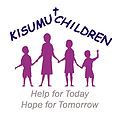Following all the hard work, not just by our children studying for their exams but also our staff supporting them tirelessly with homework and extra support where needed, the results of the 2019 KCPE exams are in.
We have results for 14 CBCH children, those that board full time and those that still live with family but who come to us for additional meals. The results are as follows:
17% scored under 200
27% scored between 200 and 259
31% scored between 260 and 299
25% scored 300 or over (1 child scoring over 400)
The exam is marked out of 500.
At a score of 403, Leah has achieved the highest score ever recorded by a CBCH child. She is in the top 1% throughout Kenya.
Using our guideline of 260 marks, seven of our pupils should receive calling letters to Secondary school, with National school status expected for Leah and possibly Rosepeacel, at 368, this is the third highest CBCH score recorded.
Here are the national results so we can see how our children’s results compare:

So, what does this all mean?
Children start primary school at 6 years of age and will study there until they are about 13/14 years of age although, at present, it is possible to re-sit a school year if a student falls behind which has a knock on effect for their leaving age. The curriculum is uniform across the country and includes: English, Kiswahili, a local language, mathematics, science, social studies, religious education, creative arts, physical education, and life skills. Exams are held in five subjects: Kiswahili, English, mathematics, science and agriculture, and social studies.
Assuming all goes well and students progress to the end of primary education then they will take an examination called the Kenya Certificate of Primary Education or KCPE. The examination is used primarily to rank and stream students into secondary and technical schools. Typically, students who perform well, 400 or above, are the only students guaranteed to gain admission into one of the national secondary schools, while those scoring 260 – 399 will be offered a place at a provincial school.
However, the government has upgraded an extra 27 secondary schools to the national level recently bringing the total number of national secondary schools to 105. It is likely that from the 2019 results and the number of places available, some of the students scoring 300 or above may be offered a national school place. There is still an ongoing scramble for a place at one of the top 18 traditional national schools. These are Starehe Boys, Starehe Girls, Alliance Boys, Alliance Girls, Lenana School, Kenya High School, MaryHill Girls, Loreto Limuru, Limuru Girls, Mang’u High School, Maseno School, Nairobi School, Moi Forces Academy, Moi Forces Lanet, Nakuru Girls, Utumishi Academy, Moi Girls Eldoret and Nakuru Boys.
Students who are not offered a secondary school place will have the alternative opportunity of enrolling in polytechnics and vocational training centres.
We are now awaiting calling letters arriving for our qualifying children to start secondary or arrangements for polytechnics and vocational centres for non-qualifying children to start the next stage of their journey. Follow us on Facebook to find out.
At Kisumu Children, we are so passionate about education as an important path out of poverty. That could be through schooling all the way into university level, vocational training directly into employment, business training or mentoring at any level to nurture a child to make their own way in this world. For many in the community of Kisumu, this is a distant dream and we want to do what we can to change that. Getting children into school is the first big step, and our uniform appeal here is purely for that goal. We plan to continue it as long as necessary to try and give as many children the opportunity as we possibly can.













